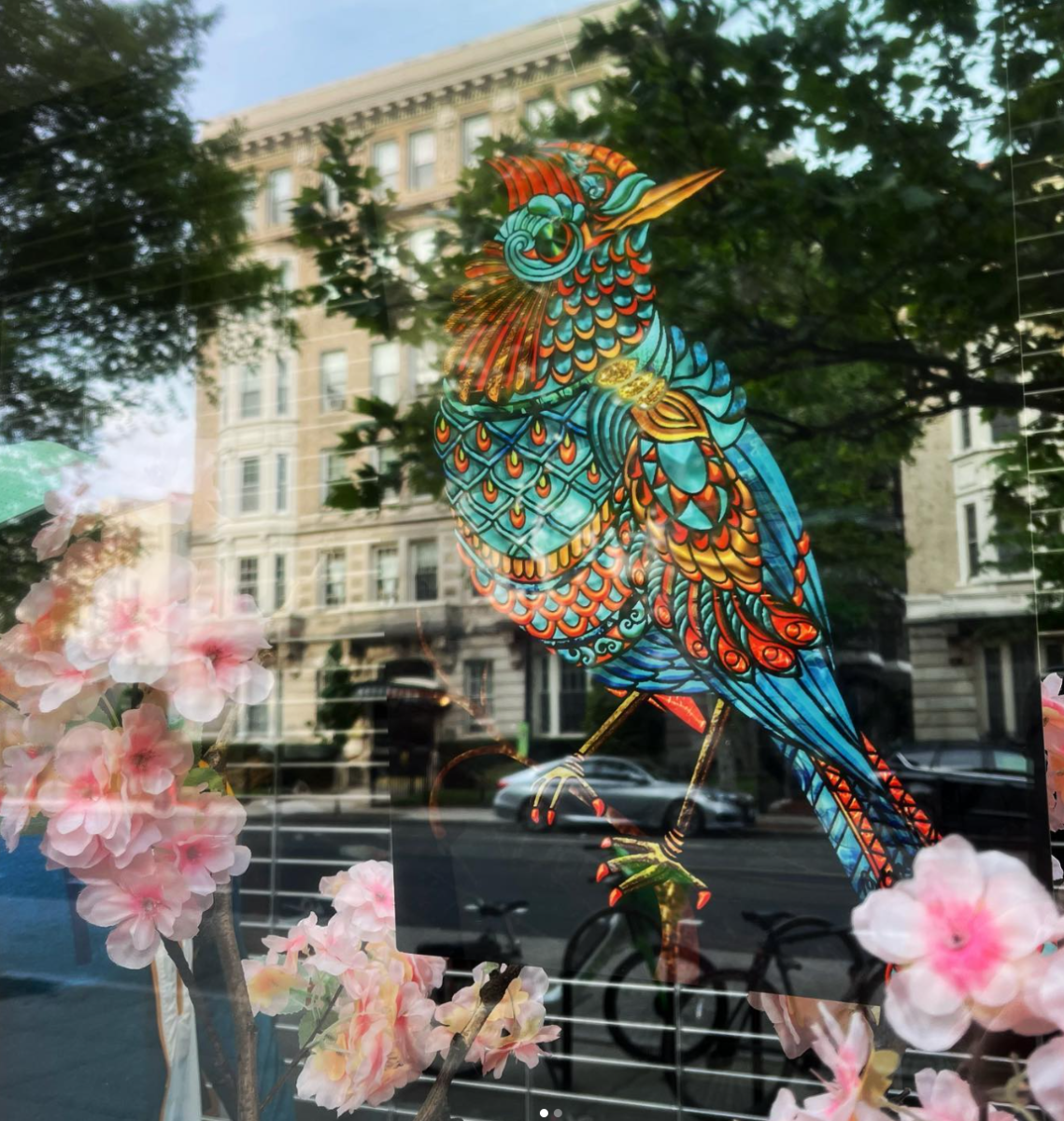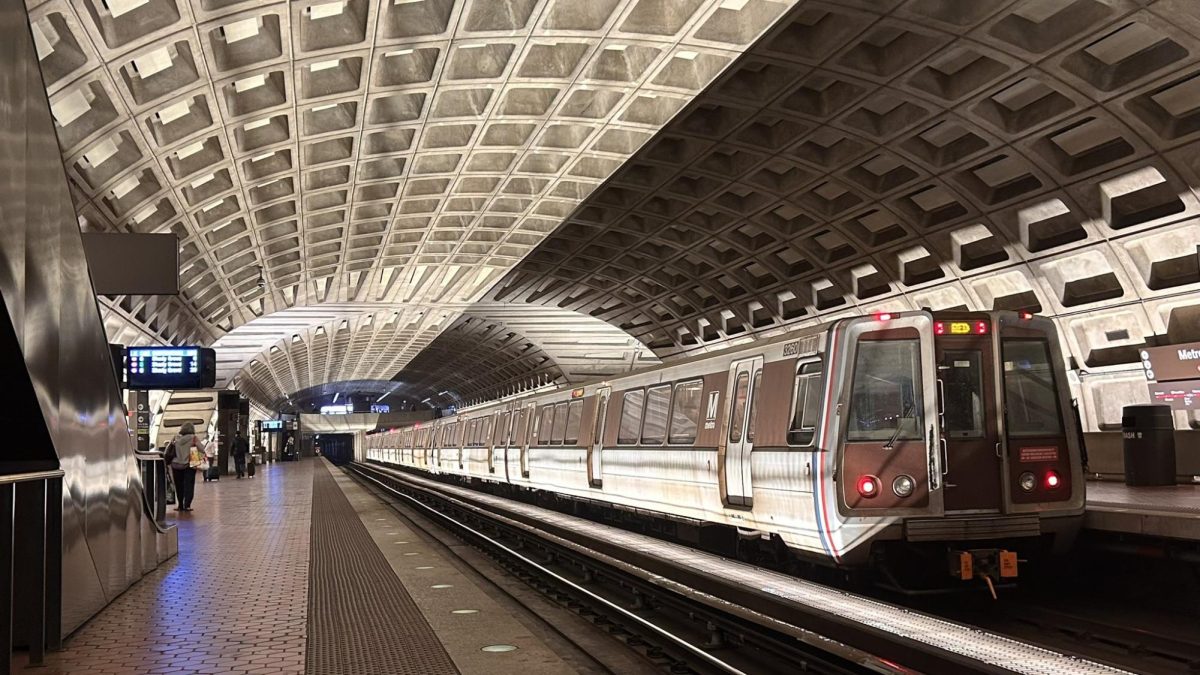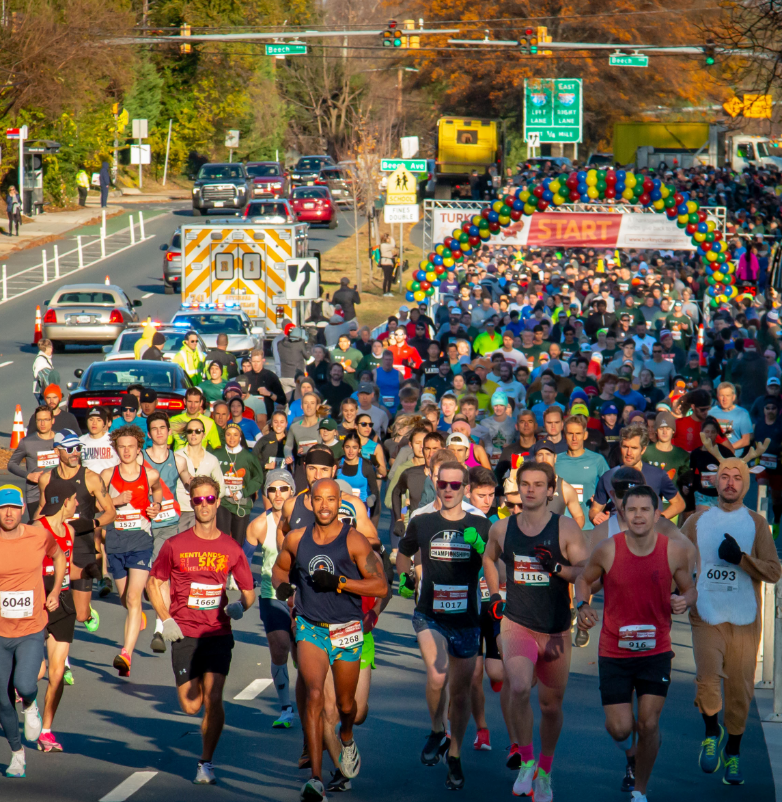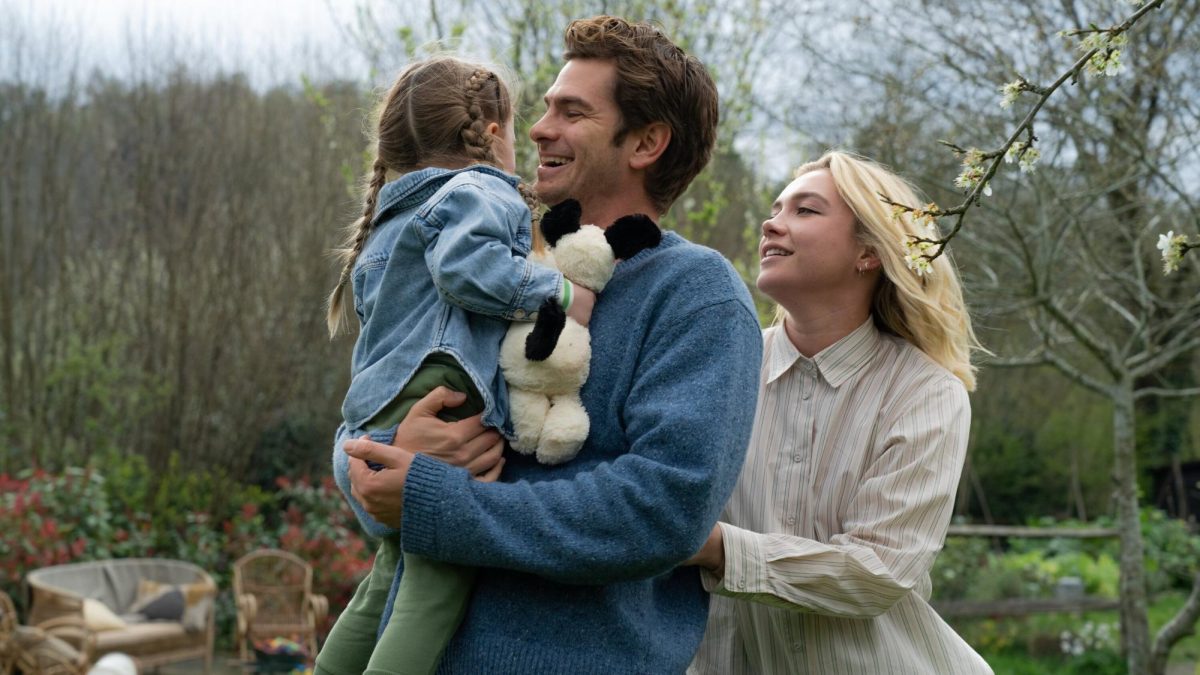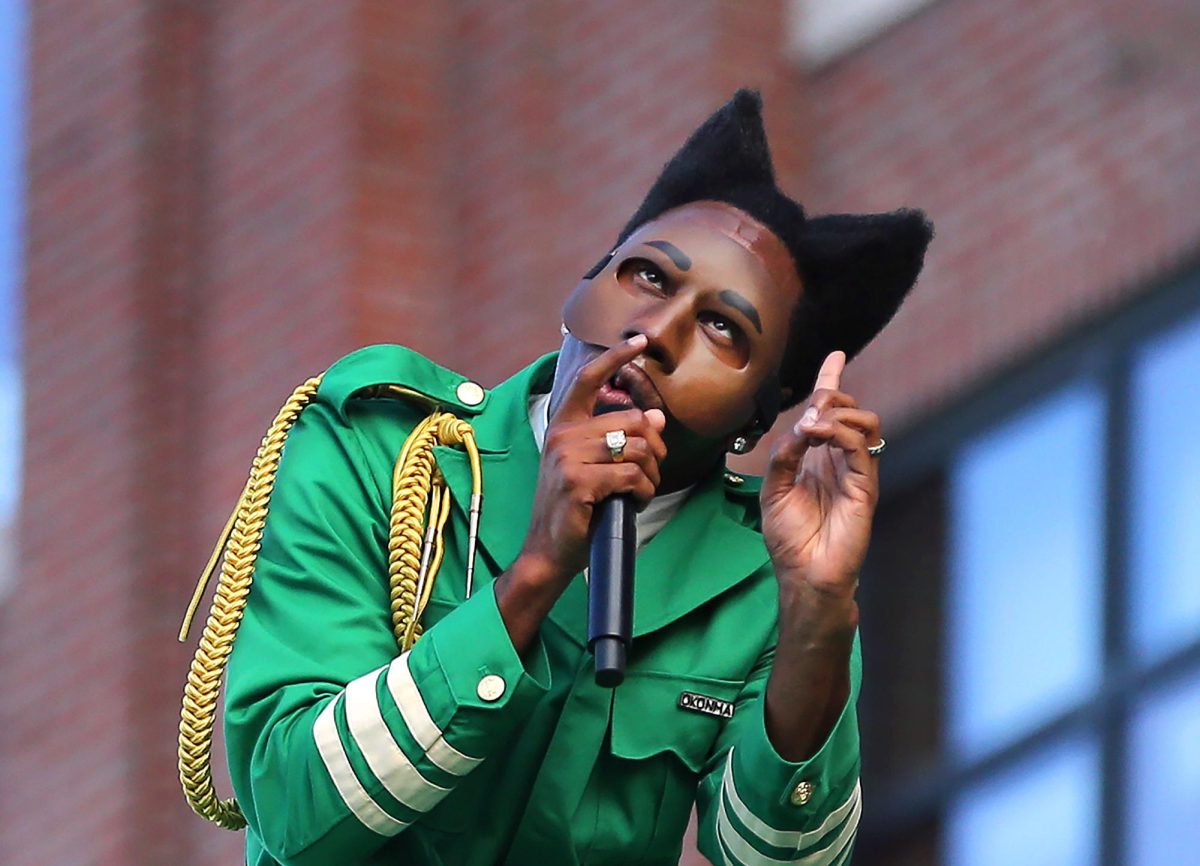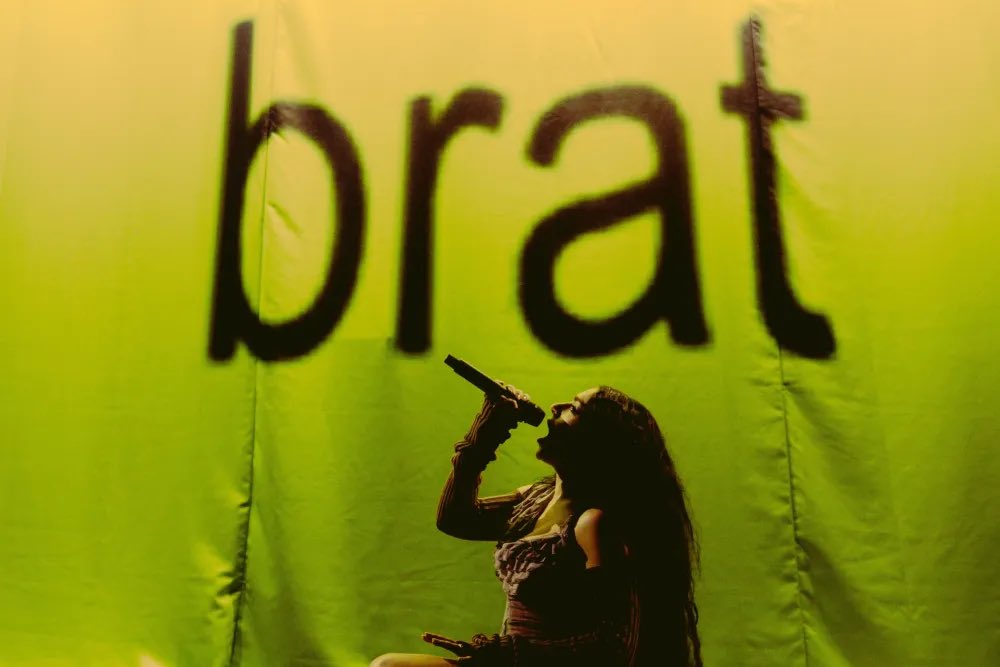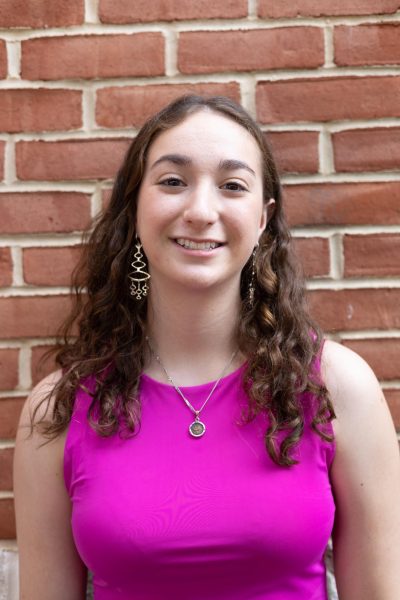It’s a sunny afternoon in April, and the Adams Morgan neighborhood in Washington D.C. is bustling with sounds of people. Between the cracks of crowds and city life, slivers of colorful art pieces hang in shop windows and line the insides of cafes.
The Adams Morgan Art Walk is an annual event in D.C. where local businesses collaborate with local artists to create an outdoor art show. Art is placed in storefronts along the streets, accompanied by QR codes that link to additional information about the artist and event.
In 2020, following the peak of the COVID-19 pandemic, the D.C. Arts Center (DCAC) created the art walk to allow the community to view art safely since indoor events were still prohibited. After receiving positive feedback from artists and community members, the DCAC made the art walk an annual tradition.
In preparation for the show, the DCAC reaches out to local artists seeking to participate in the art walk. Artists can sign up by submitting an artist statement, which details their experiences and gives background on their lives. The art show is a community effort with many creators from the D.C. area.
Once artists sign up, the DCAC asks venues if they would be willing to participate in the event by hanging artwork along their storefronts. The artists then bring their pieces to these selected venues to collaborate with business owners on the art’s placement. There are minimal restrictions on what artists can display, the main one being that the art cannot conflict with the business’ values, according to featured artist Molly Fitzgerald. Typically pieces are themed similarly to the venue they are displayed at.
Vivian Zhao, manager at Japanese restaurant Izumi Izakaya, feels the art walk is a great way to contribute to the Adams Morgan community.
“Adams Morgan is an art district,” Zhao said. “It’s a way to support local artists and young people.”
Adams Morgan is a place known for attracting young crowds and nightlife, as well as being a place of blossoming culture and art. Whether the art walk helps businesses and artists varies from person to person. Some people like Zhao don’t think it helps their stores economically but believe it to be an important event nonetheless.
Fitzgerald, whose work was displayed at the Cake Room in D.C., believes the show is valuable because it exposes a wider audience to her work.
“I don’t know sales-wise if it will help but it helps to expand the people that know what I’m interested in and what my art is all about,” she said.
Finances are a small part of the reasoning behind the art walk as the event’s main purpose is to bring the community together and create a colorful environment.
When buyers purchase art, the stores ensure profits from art sales go directly to the artists. Many featured creators don’t have their own shows, so the art walk helps them expand their audience and gain buyers. The Lost City Books store sold two to three paintings within the first week, profits that helped local artists continue creating pieces, said Lost City Books floor manager Jacinta Allie.
Art has also been proven to positively impact physical and mental health. Outside of her artistic profession, Fitzgerald works in public health and believes individuals can be positively affected by events such as the art walk.
“In general, there’s a lot of evidence to show that communities feel happy about their surroundings,” Fitzgerald said. “The way their communities look, like beautification and greenery, but also art, has a really good impact on well-being.”
Most art walk tour goers enjoy the variety of venues since it encourages them to explore different cultures. At D.C. cafe Tryst, General Manager Chandler Raffa feels the artistic and cultural celebrations of the art walk are a welcome change from what one typically sees in the area.
“D.C. is pretty culturally dense,” Raffa said. “So we just want to make sure that we show all the parts— not just the government politics side, but the fun artsy side as well.”



